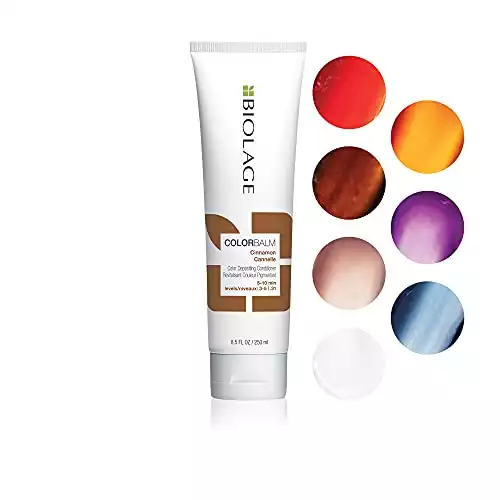Jump to:
Whether you’re a hair chameleon or simply looking to temporarily cover up damage, you’ve probably wondered about mixing dye with conditioner. There’s a proper way and time to do it – read on to learn more.
What Happens When You Mix Dye With Conditioner?
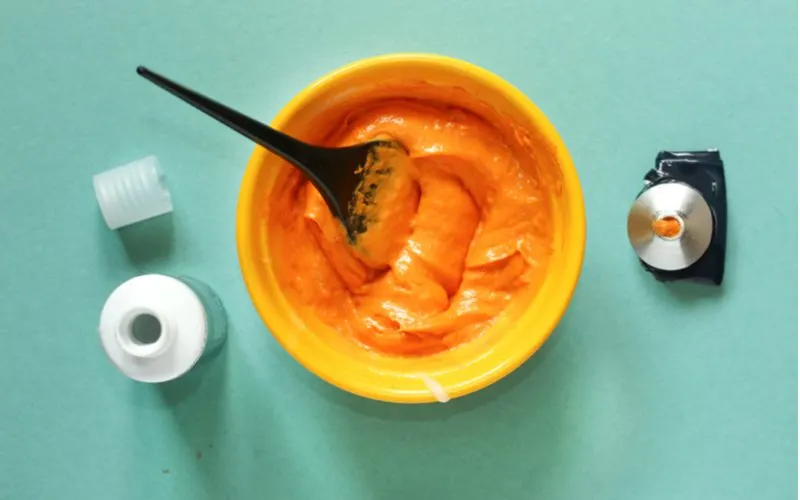
Elena Kitch/Shutterstock
The first thing you should know is that mixing dye with conditioner only works with semi-permanent hair dye.
Not only will conditioner interfere with the developer needed for permanent dye, but adding it to your dye mix will lead to your color applying unevenly.
It’s best to use the conditioner trick when using fantasy colors that inevitably fade at some point. Remember that the end result will be a shade or so lighter than the one on the box.
That said, you will have more moisturized locks to show for it. Keep in mind that the hair color you end up with won’t be as bright as you may desire. The conditioner acts as a barrier and may make the color look more matte or muted.
However, since you’ll be dealing with semi-permanent dye and possibly bold fade-out colors, the added moisture will still be worth it for a unique shade. The more vibrant your color is, the better.
Choosing the Right Conditioner
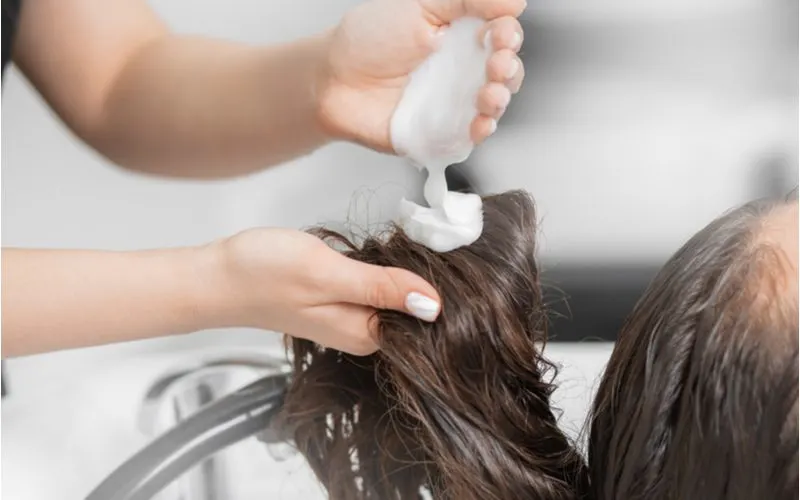
Parilov/Shutterstock
So, you’ve decided to take the plunge. Perhaps you’re trying to fix damage from a previous bad dye job. Or maybe you have a color you want to use up and think adding conditioner will give you a boost. Here’s how to ensure the process goes smoothly.
Step One: Evaluate Your Goals
The first step is to evaluate your situation. Are you trying to boost your color between colorings with minimal damage? If so, opt for a color-depositing conditioner.
These come in all shades, and you can easily find one that works with your dye. If your hair is color-treated already, using a formula for treated hair is a safe bet.
More importantly, this type of hair conditioner is versatile, and you can use it with any dye shade. Are you dying hair that’s already damaged? Consider a leave-in conditioner or a formula with extra hydration.
Step Two: Know What Ingredients to Avoid
Whatever conditioner you choose, make sure it is free of the following:
- Parabens
- Silicones, such as dimethicone
- Polyethylene Glycols
- Formaldehyde
- Synthetic fragrance and color
The above ingredients are harsh and harmful chemicals that can further dilute your hair color or cause more damage and a faster fade. To get the best results, you want to avoid anything waxy that interferes with your color and texture.
Also, unless you’re using a color-depositing conditioner (keep in mind the shade may vary at the end), using a white conditioner is best.
Mixing Dye and Conditioner in 3 Steps
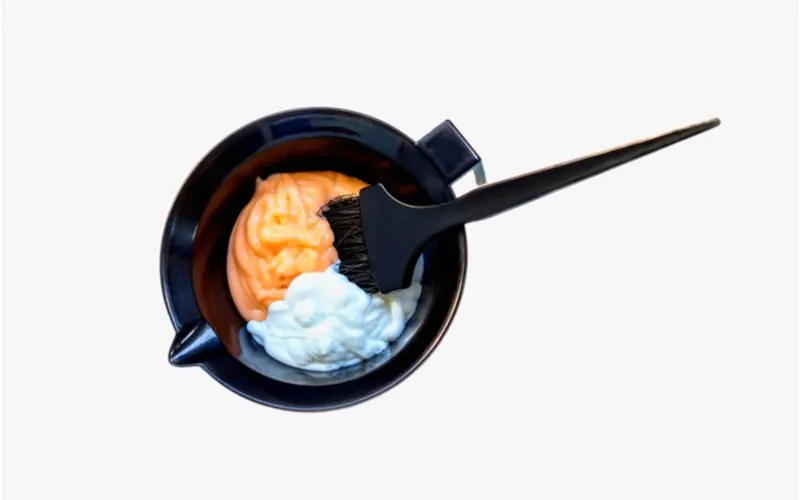
Korelidou Mila/Shutterstock
The application process for dying your hair doesn’t change much when adding conditioner. However, you should ensure you’re as prepared as possible for your unique shade.
Step One: Start Mixing
After choosing the right conditioner, you can start by gathering the following simple items:
- A small bowl or plastic container (never use metal)
- A third of a cup of conditioner
- Application brush
- Dye
- Gloves
The amount of conditioner you mix in depends on how much you’d like the dye color diluted. Generally, you can mix more in as you go if you think you need it. Start by pouring the conditioner into the bowl and then the hair dye. As always, remember to wear gloves to protect your hands.
Step Two: Prepare for Application
Make sure your hair is brushed thoroughly before beginning the process. Divide it into four sections just as you would before any dye job and pin it up. Protect your clothes and your skin.
If needed, rub some Vaseline or cream around your hairline, so no dye gets on your skin. Lastly, use the dye brush to mix and look out for any remaining white spots peeking through.
After ensuring that your dye and conditioner combination is thoroughly mixed, you’re ready to start applying the mixture with a dye brush. Start from root to end.
Step Three: Rinse
Read your hair dye instructions and leave the color in your hair for as long as they state. A simple rinse with water will do if you have already shampooed your hair before beginning the dying process.
If you do use shampoo, remember that even the gentlest formula will get rid of a bit of color. If you want a pastel version of your shade, or you know you want it lighter than the color displayed on the box, this shouldn’t be too much of a concern.
However, if you choose to shampoo after dying, make sure you use it as a formula without any of the same ingredients you avoid in the conditioner. Additionally, look out for the following elements in shampoo as they will further strip color:
- Triclosan
- Sulfates
Sulfates are a foaming agent in shampoo that acts as a detergent. If you want to avoid stripping your hair color, avoid it at all costs. Triclosan is an antibacterial ingredient and is very harsh on your hair.
This ingredient will also cause damage and ruin your texture, which defeats the purpose of mixing conditioner into your dye. Make sure you don’t use hot water to wash off as the heat can also strip more color. When the last of the dye rinses out of your hair, you can proceed to dry and style as usual.
Things to Consider
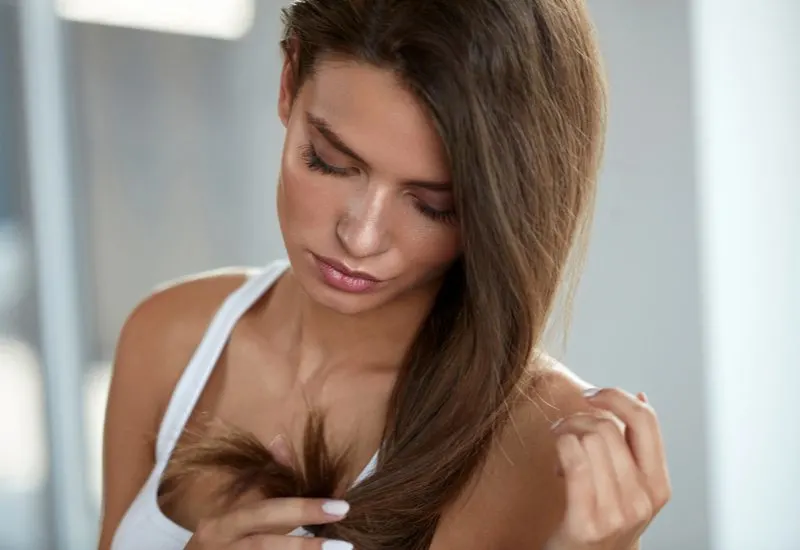
Puhhha/Shutterstock
Before you begin the process of mixing conditioner with your next hair dye, you will need to consider your needs and goals:
- Evaluate your level of damage. If the reason you choose to mix conditioner and dye is that your hair is already damaged, consider whether you should wait longer to dye your hair. If your hair isn’t too brittle or prone to breakage, adding conditioner to the dye will help.
- Plan for how often you plan to dye. If you like to change your hair color regularly, it’s an excellent choice to add conditioner into the mix.
- Don’t be afraid to create new shades. If you’re using a fantasy dye, there are so many ways to have fun by adding conditioner. Take advantage of the slight dilution.
- Only use plastic dye bowls or containers. Metal is particularly dangerous because it can create unwanted chemical reactions. It also oxidizes the dye and may drastically change your color.
Frequently Asked Questions
Below are some of the most frequently asked questions about mixing conditioner with dye:
Is it safe to mix conditioner and dye?
Yes, mixing conditioner and dye is safe. It’ll nourish your hair more than using dye alone and can have several benefits, including blending a better shade and ensuring a smoother texture. But be careful: there are some things to consider.
Can I put hair dye into my conditioner?
If you don’t want to dye all of your hair with a conditioner mixture, adding a little dye to your conditioner can be great for a gradual color boost. Every time you condition, you will be depositing some color into your hair. Doing this is a great option if you’re not looking to change shades but simply want to ensure your current color lasts longer and remains vibrant.
Does mixing conditioner with hair dye make it lighter?
Mixing a conditioner with your hair dye will make it slightly lighter because the conditioner acts as a diluting agent. However, it shouldn’t affect the color of semi-permanent dyes drastically.
Can I add a conditioner to permanent hair dye?
A rule of thumb is that you shouldn’t add a conditioner to a permanent hair dye because it interferes with the developer. Additionally, you’re less likely to get even color by mixing conditioner with a permanent dye.
Can I use a conditioner instead of a developer?
You can’t use a conditioner to replace a developer. The developer has a specific function: to open up the hair cuticle and pull out pigment molecules. This process is what makes permanent (and demi-permanent) hair dye so different from semi-permanent dyes, albeit also more damaging.
What happens if I leave in semi-permanent hair dye longer?
Because a semi-permanent dye is less damaging than a permanent hair dye (due to the absence of a developer), you can’t do much harm by leaving it in longer.
That said, you will end up with a stronger shade. If this is your goal, you can go past the recommended time a few minutes, especially when it’s mixed with a conditioner.
So, Should You Mix Dye With Conditioner?
Mixing dye with conditioner is safe and can give your locks the ultimate hydrating treatment while changing your color. As long as you stick to semi-permanent color and are diligent about choosing the right conditioner, it may work.
But, to be safe, we think it’s always best to opt for a color-depositing conditioner. By playing it safe, both your hair and your hair stylist will thank you.

